The Best Memorization Techniques for 2024 (proven by science)
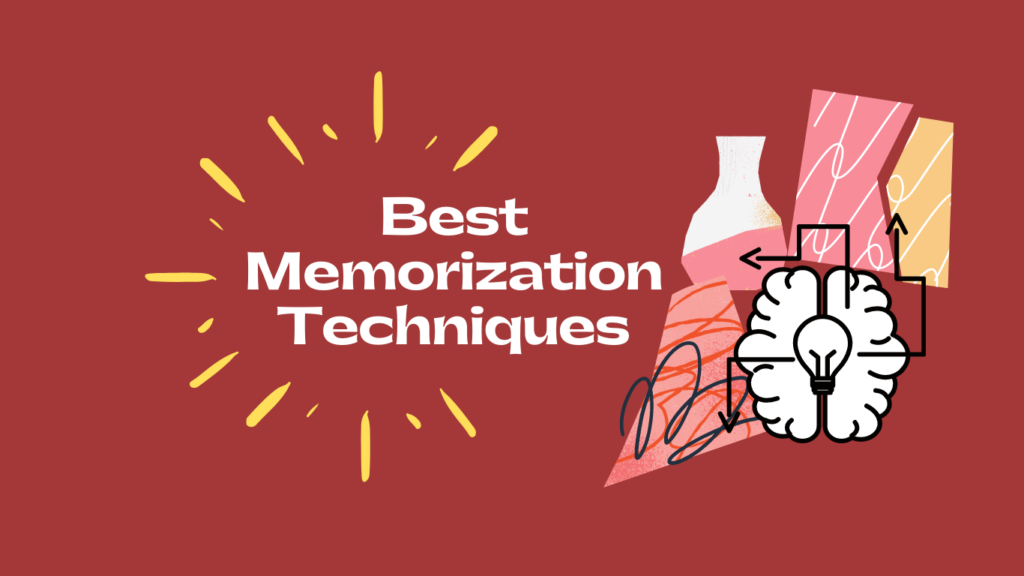
Forgetting information can hinder our productivity and performance, causing havoc in our daily routines, especially at work. Besides, that experience of having something “on the tip of your tongue” but that name or that term doesn’t come out, it’s really frustrating! As we all have been there, we are featuring the best memorization techniques for you to keep your brain storage up to date. Stay tuned and forget no more!
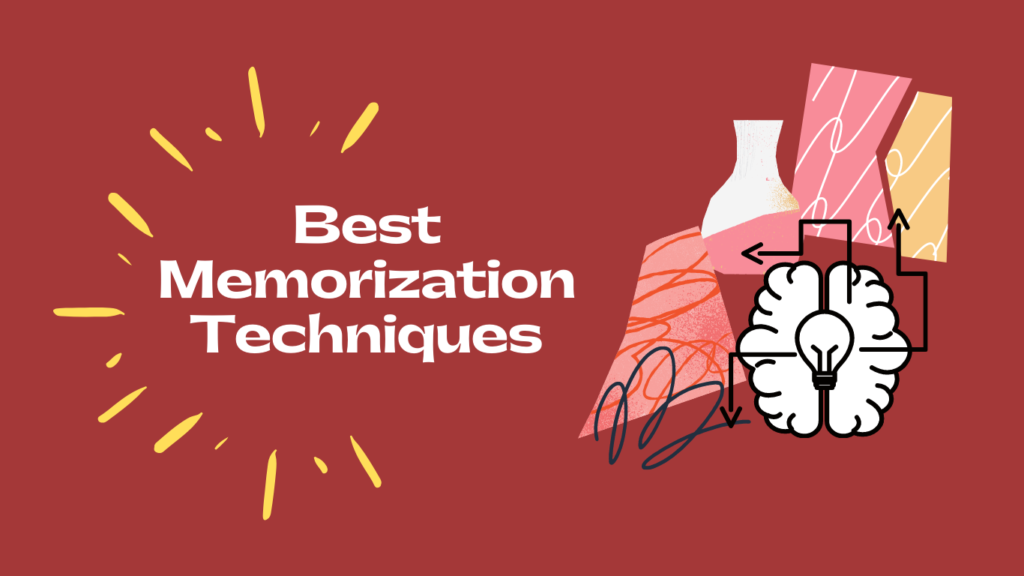
Over time, we have been trying to figure out how memory works, and how to find the best memory techniques. To Plato, the ancient Greek philosopher we can accredit the first serious discussion of the subject. He thought of memory as a blank slate on which correct impressions of the world could be made and stored indefinitely.
Plato separated two parts of memory: the ability to retain or hold information, and the ability to recall information already stored in memory. Nowadays, many contemporary psychological theories of memory still share these views. And of course, these views have been considered to establish the best memorization techniques.
Human Brain and Memorization
The human brain is one of the most complex structures in the universe, containing billions of neurons making neural connections in your everyday life, and memorization is just one of its functions. The brain is divided into two hemispheres: the left and right. Each hemisphere controls different aspects of our body.
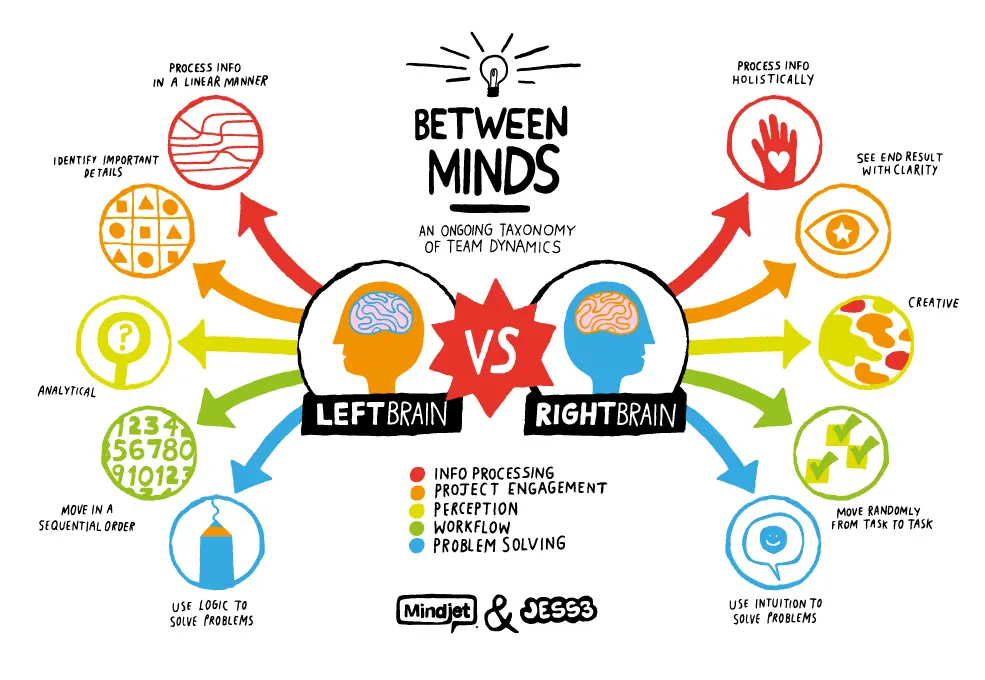
Left and Right
The left hemisphere controls the right side of the body and is analytical. It’s good for tasks such as math, science, and words that have a specific meaning. The right hemisphere controls the left side of the body and is creative. It’s good for tasks such as music, art, and images.
Interestingly enough, our ability to remember information also depends on which hemisphere we are using when we store information. If we are trying to remember something that happened to us, we are more likely to use our left hemisphere. If we are trying to remember something that we have seen, we are more likely to use our right hemisphere.
According to Marinsek et.al (2016), the two hemispheres of the brain also communicate with each other. In the image below you can see the cognitive functions that the left (purple) or right (orange) hemisphere excels at. Dark orange represents cognitive processes that are substantially bilateral.
The left hemisphere sends messages to the right hemisphere, and vice versa. This is the corpus callosum. When these messages pass through the corpus callosum, they become transcallosal connections.
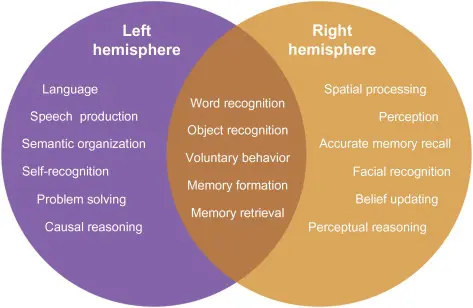
Memory Differentiation
With the complexity of the brain, comes memory differentiation. When you need to remember a phone number, a grocery list, or a set of instructions, you rely on what psychologists and neuroscientists refer to as working memory.
It gives you the ability to hold and manipulate information in mind over brief intervals. It’s for all those things that are important to you in the present moment, but not 20 years from now.
Researchers believe working memory is central to the functioning of the mind. It correlates with many more general abilities and outcomes, things like intelligence and schooling, as well plays a role in basic sensory processes.
- Working memory is subdivided into three main types: sensory memory, short-term memory, and long-term memory.
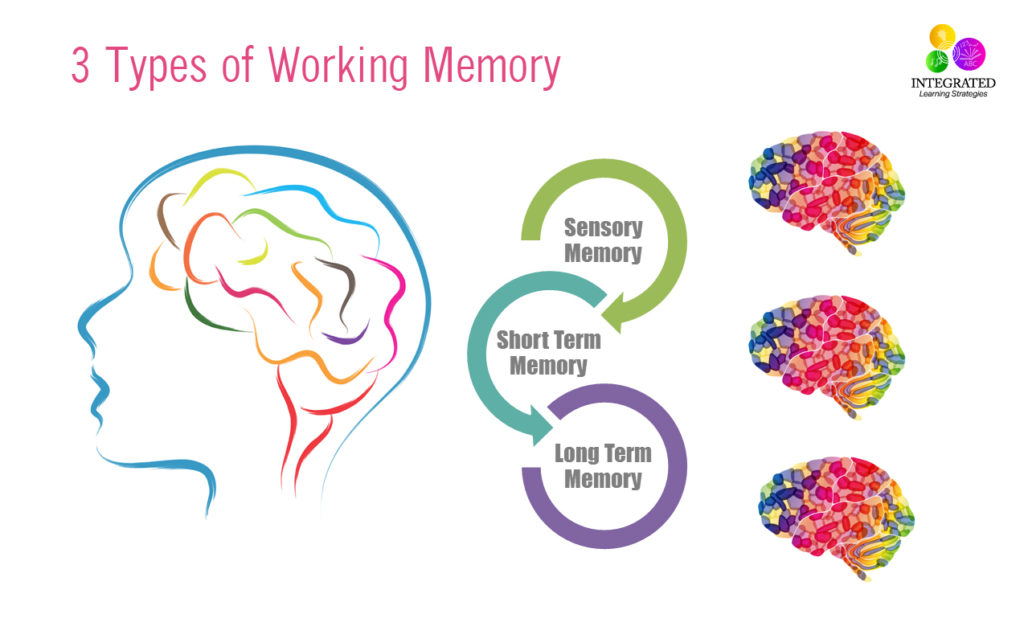
- Sensory Memory is the first stage of memory. It lasts for only a fraction of a second, and it stores information from our senses. For example, when you see something, the image is stored in your sensory memory.
- Short-term Memory is the second stage of memory. It is like a temporary storage area for information. The average person can remember about 7 items in short-term memory at any one time.
- Long-Term Memory is the third stage of memory. It is a permanent storehouse for information. The average person can remember about 100,000 items in long-term memory.
Memorization is a key cognitive process of the brain as almost all human intelligence is functioning based on it. So, how we can memorize things? Took a look at the next model!

Surely it’s a very intricate process, our brain is an extremely efficient organ in processing information! But if the brain is such an effective machine, how come we forget stuff?
Ebbinghaus’ Forgetting Curve
According to Ebbinghaus’ forgetting curve, there is a strong correlation between memory and time. The forgetting curve is a graph that shows how quickly we forget information over time.
The curve typically starts out with a steep slope as we tend to rapidly forget the information in the first few hours or days after we were exposed to the new data. However, the curve levels off as we slowly lose the information over time.
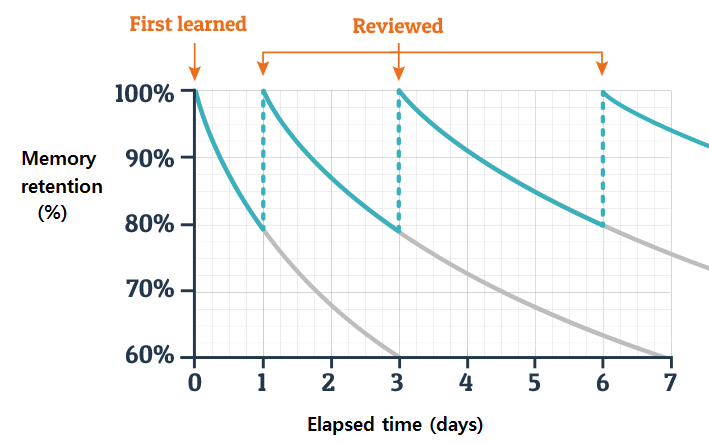
- It is crucial to practice effective review strategies in order to remember freshly informed data. The best memorization techniques don’t work by themselves!
Memorizing information is just as vital for exercising the brain as physical activity is for exercising the body. However, we want to complete both exercises in the most efficient and effective manner possible so that we can reap the benefits. We just need to pick the right memorization techniques for us.
Best Memorization Techniques for Professionals
Let’s exercise our brains with these top memorization techniques for successful professionals to remember details and better retain information!
The Loci Technique
Remember Plato? The Method of Loci, also known as the “memory palace technique” is an old and very well-known memory technique as it was used by Greek and Roman orators to remember speeches.
“Loci” (Latin for “places”) is a memory method based on the concept that people remember places they are familiar with well. So, if you can associate something (important concepts, items on a list, etc.) with a familiar area, the location will serve as a reminder to help you recall what you’re trying to remember.
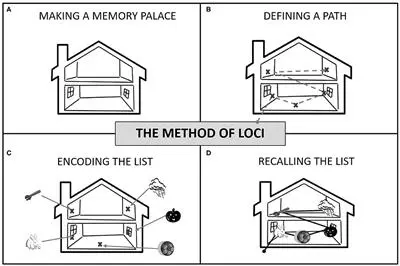
HOW TO: This technique takes out the best of our spatial memory to help us remember information. First, create a mind map of your surroundings. Next, associate each item of information with a specific location on your map. When you want to remember the information, mentally walk through your map and recall the associated items.
Get more out of your business
Get the best employee engagement content every week via mailing list
Mnemonics Devices, One of the Best Memorization Techniques
Mnemonic is a memory device that helps us to remember information better. There are many different types of mnemonic devices, but all of them work by using associations to make the information easier to remember.
One popular type of mnemonic device is the acronym. An acronym is a word made up of the first letter of each word in a phrase or sentence. For example, NASA (National Aeronautics and Space Administration) or SMART (Specific, Measurable, Achievable, Realistic, Time-Bound) goals.
Another popular type of mnemonic device is the rhyme. A rhyme is a short poem or song that helps you remember something by using sound association.
HOW TO: By using a combination of images, acronyms, rhymes, and actions, you can create powerful mnemonic devices that will help you remember any type of information!
The Storytelling Technique
This memorization technique is based on the idea that humans are natural storytellers. We remember information better when it is stored in the form of a story.
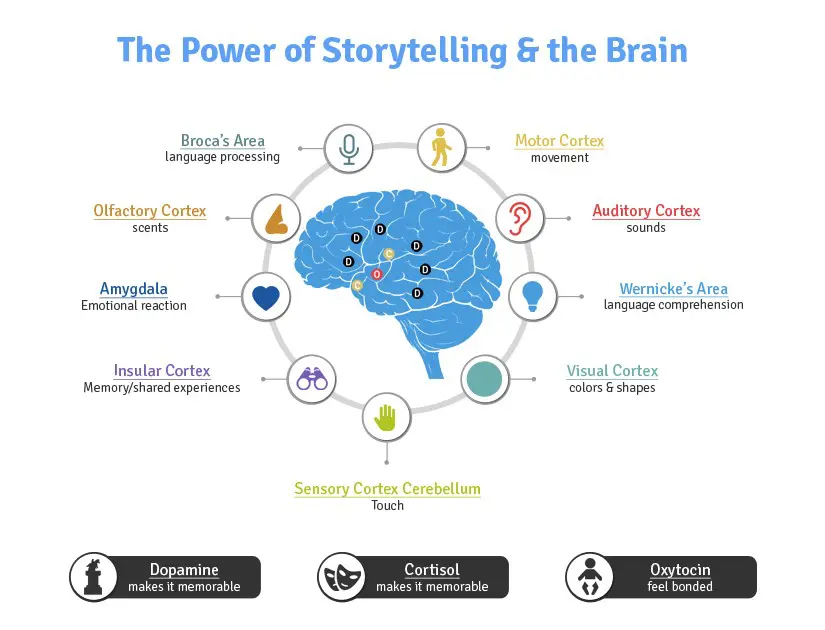
HOW TO: To use this technique, you need to come up with a story that incorporates the items of information you want to remember. The story can be as simple or complex as you want, but it should be meaningful to you.
Pixar’s Inside Out movie is a great example of memorization through storytelling. The movie tells the story of an 11-year old girl named Riley who moves out from Minnesota to San Francisco causing her huge distress.
All her memories are tinted with specific emotions, specifically: Joy, Sadness, Disgust, Anger, and Fear. Through the film, we can see Riley recalling memories as some sort of projection while featuring the emotion dominating the scene.

TIP: People remember better after an emotional reaction. Include positive emotions in your story!
The Chunking Technique
This memorization technique is based on the fact that humans are limited in their ability to remember a large number of items at one time.
You can boost how much you remember by breaking down a larger whole into smaller sections. The division of phone numbers into chunks rather than a single continuous line of numbers is an example of chunking.
HOW TO: Break down the items of information into smaller, more manageable chunks, especially if you are dealing with a complex topic. Look for connections between each chunk, and go over them several times.
The Peg System
The Peg System is another memorization technique that uses spatial memory. With this technique, you associate each piece of information with a peg word.
The system assigns each number to a word, and then we use these words to help us remember the order of items.
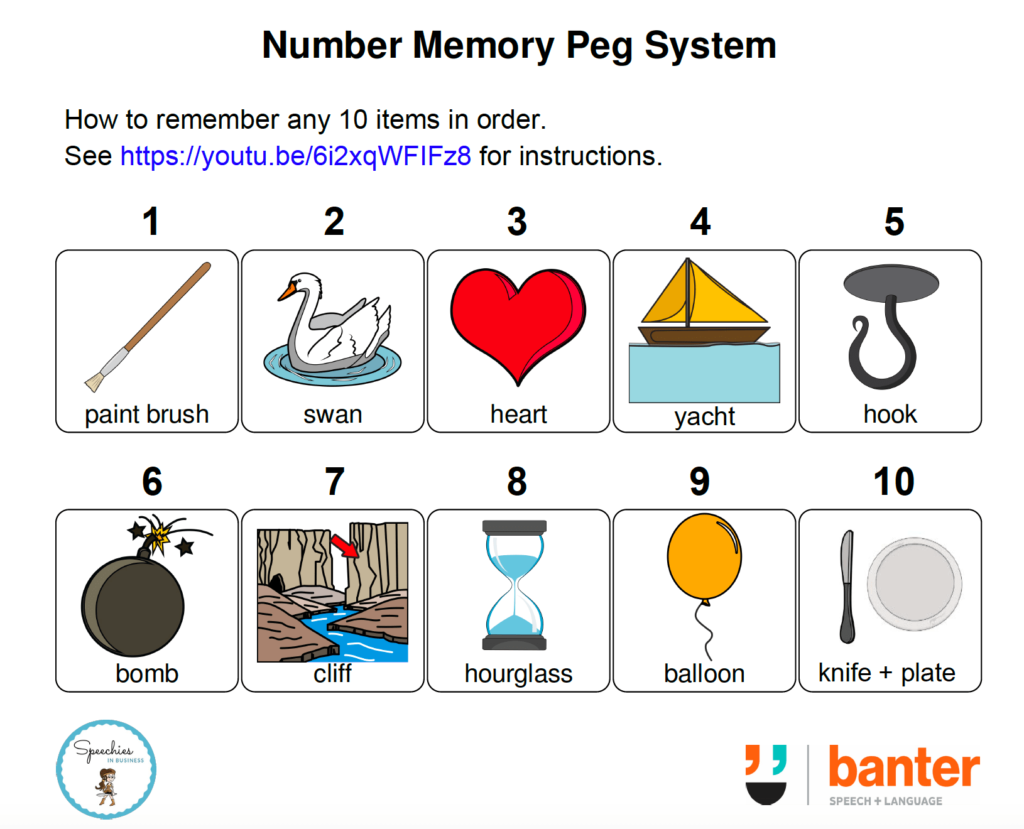
HOW TO: Simply associate each number with a word, and then use those words to help you remember the order of the items. If you need to remember more than 10 items, simply create additional words for numbers 11-20, 21-30, etc.
The Association Technique
This memorization technique is based on the fact that humans are naturally good at making associations. We remember information better when we can associate it with something we are familiar with.
HOW TO: Come up with a mnemonic device or story that links the items of information you want to remember together. The more bizarre and outlandish the associations, the better!
Spaced Repetition Method
Another technique to improve your memory is the “spaced repetition method”. This method involves reviewing information regularly but spacing out the reviews over a period of time.
HOW TO: If you are trying to learn a new language, review the material every day for a week, then take a break for a week, and then review it again for another week. This method helps to “fix” the information in your memory.
TIP: Do not try to cram all your material into one night; this will not give you any better chances of memorizing it than if you had spent a week with it. All that will happen is that you will end up forgetting most of what you took in and have wasted your time and effort altogether.
Study sessions shouldn’t pass the one-hour mark, each day over a seven-day period, ensuring that the repetition works. It’a important to give information enough time to be committed to memory and stored efficiently and correctly by your brain.
The Link System
The Link System is perhaps one of the oldest known methods for remembering things that work by linking items together according to their physical properties.
HOW TO: All you need to do is come up with physical associations for each item you want to remember. When you are trying to recall the information, think of the items as if they are in front of you and try to see the links between them.
Rainbow Memory
Humans are very good at remembering colors which is why a lot of the best memorization techniques use colors as a way to remember different bits of information.
HOW TO: To use this method, simply come up with a list of colors and associate each color with an item that you want to remember. When you need to recall the information, think of the colors in order and see if you can “see” the image in your head. If not, try associating the colors with something else until it becomes easier for you to remember.
When people are trying to remember something, they might picture the items in their minds in black and white. However, research as the one shown below states that picturing information in color can help with both the memorization and recall processes.

Kuhbandner et al., 2015 have very peculiar findings in their research “Differential binding of colors to objects in memory: red and yellow stick better than blue and green”
“In all four experiments, memory for the color of an object depended on the color type and was particularly high for red and yellow-colored objects and particularly low for green-colored objects, indicating that the binding of colors into object memory representations varies as a function of color type.”
Colors for Memorization
One way to use colors for memorization is by creating a memory palace. This involves visualizing a familiar place (like your childhood home) and then assigning different colors to different rooms or objects inside that space.
Whenever you want to remember something, you simply picture it inside of your memory palace and the associated color will help to cue your memory and remind you what it is that you’re trying to remember.
Good Short Term Memory Skills
People who are good at memorization techniques usually have better than average immediate recall abilities because they can consciously or unconsciously process information into their short-term memory (STM) and then recall it before it decays (usually around 15 seconds).
Short-term memory skills are essential to learning and remembering new information. One way to improve your STM skills is by practicing the best memorization techniques that we’ve talked about in this article such as using mnemonic devices, linking items together, and using colors.
Additionally, you can try to increase your attention span by practicing activities that keep you mentally engaged like meditation or mindfulness exercises.
Good Long Term Memory Skills
People with good long-term memory (LTM) skills usually have a greater ability to remember info from their long-ago past, general knowledge, or vocabulary.
These people are skilled at memorizing important dates for history, remembering words in a foreign language they studied years before and recalling trivial information such as license plate numbers.
One way to improve your long-term memory (LTM) skills is by regularly learning new stuff. Learning on a regular basis can help us keep our minds fresh, avoid memory loss, and boost our spirits. Pick up that book, listen to that podcast, but make it a routine.
Pro Tips on Memorization for Work Productivity
There are a few key things to keep in mind when it comes to memorization and productivity. The first is that it’s important to find a technique that works best for you and that you’re comfortable with. Secondly, repetition is key – the more you practice, the easier it will be to remember information.
Finally, breaking down information into smaller chunks can also make it easier to learn and recall. So, if you have a big project due to come up, start by breaking it down into smaller tasks and then focus on memorizing each individual step. This will help ensure that you stay on track and don’t get overwhelmed.
How to Remember the Letters on a Keyboard with the Best Memorization Techniques
When most people try to learn the keyboard, they usually start by trying to remember where all of the letters are. However, this method can be a little tricky because there are a lot of letters and it’s easy to mix them up.
HOW TO: Using the F and J keys as reference points is possibly the easiest approach for remembering the keys on a keyboard. These keys have little, raised bumps on them on most American keyboards.
You can feel around the keyboard to identify the F and J keys if you close your eyes. Place your pointer fingers on them and move the others in random directions, gradually trying to remember the letters that surround them.
How to Memorize a Text Quickly and Effectively with the Best Memorization Techniques
There are a few things that you can do in order to help improve your memory when it comes to memorizing texts. First, make sure that you are well-rested and relaxed before you begin. If you’re feeling tense or anxious, it will be harder to remember the information.
Secondly, try to read the text a few times so that you get a feel for it. This will help your brain to better process the information. Finally, use some type of mnemonic device to help you remember the text.
This could be something as simple as making up a tune or rhyme to go along with the information. If you’re having trouble remembering a particular word or phrase, try breaking it down into smaller parts and creating mnemonic devices!
Let’s wrap it up!
- Read the text aloud several times for words mind retainment.
- Highlight or underline important points or keywords as you read.
- Create mental images or associations for each of the highlighted points.
- Recite the text from memory, using the images to help you remember the words.
- Practice regularly until you have the the text memorized.
Lifestyle Tips for Memory Champions!
- Get enough sleep: Our brains need time to rest and recharge in order to function at their best. If you’re not getting enough sleep, it will be harder for you to remember information.
- Regular exercise: Regular aerobic activity, such as running, appears to increase the size of the hippocampus, a brain region involved in language memory and learning.
- Eat a healthy diet: Eating a balanced diet is important for both your body and your brain. Depriving your brain of the nutrients it needs will make it harder for you to remember things.
- Stay mentally active: The more you challenge your brain, the better it will perform. Try doing puzzles, learning new skills, or playing mental games to keep your mind active and sharp.
- Reduce stress: When we’re stressed out, our minds are busy trying to deal with all of the cortisol and adrenaline that’s coursing through our bodies. This leaves little room for storage of new information. Take some time for yourself each day to relax and de-stress.
- Get organized: As we mentioned before, organization can help to improve your memory retenton. When everything has a place, it’s easier for your brain to find and remember the information it needs.
- Practice regularly: The more you practice the best memorization techniques, the better you will become at using them. Try practicing regularly so that the techniques become second nature to you.
Final Thoughts
Although, memorization is usually depicted as an “old school” tool still plays an important role in learning and brain development. Make sure to not “just look over” the information, instead pull up a strategy for better memory.
Whether you are using digital tools, or physical flashcards, always settle a learning plan. Here, we featured the best memorization techniques that have been proven to be effective and powerful. So, give them a try and see which ones work best for you!


